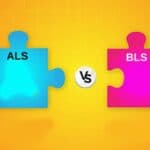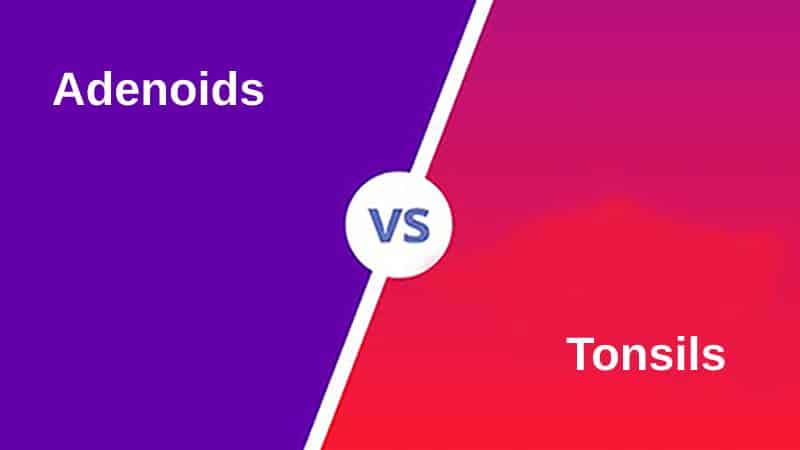When it comes to neurodegenerative diseases, it is very common to confuse ALS (Amyotrophic lateral sclerosis) and MS (Multiple sclerosis) mainly because of the word “sclerosis” in both names.
ALS and MS are disorders related to the nerves and the brain, but apart from it, they are very different in how they affect the human body and how it is treated.
ALS vs MS
The main difference between ALS and MS is that ALS is a nervous system disorder that impacts the spinal cord and brain nerve cells. On the other hand, MS is an autoimmune disease that tends to make the body attack itself.

ALS, or Amyotrophic Lateral Sclerosis, is a disorder that destroys the nerve cells, which can cause loss of muscle control. Lou Gehrig’s disease is another name for Amyotrophic Lateral Syndrome. As ALS affects the nerves that impacts muscle needed to move, eat, or even breathe, there is no cure for ALS yet.
MS, or Multiple Sclerosis, is a disease that disables the human body’s central nervous system (CNS). When a person is suffering from MS, their immune system attacks Myelin. Myelin covers nerve fibres, and when attacked, it causes a communication blockage between the brain and other parts of the body.
Comparison Table Between ALS and MS
| Parameters of Comparison | ALS | MS |
| Type of disease | ALS is more of a hereditary disease. | MS is an autoimmune disease. |
| Impacts | ALS tends to impact the physical activities of a human being. ALS, in majority of cases, can be fatal. | MS tends to impact the nervous system and also the mental health of a person. MS is a serious condition. However, there are only a few reported cases that were fatal. |
| Body parts affected | ALS mainly affect the brain and the Central nervous system. | MS mainly disturbs the functioning of the brain and the messages that are sent via the nerves. |
| Early Signs and symptoms | The symptoms of ALS include cramps in muscles, clumsiness, and issues in mobility. | The symptoms of MS include problems in bowel movement, depression, cognitive issues, and fatigue. |
| Signs and symptoms in later stage | During the later stage of ALS, the patient tends to find speech being slurred or they get difficulty swallowing. | The final stage symptoms that a person will experience include paralysis, blood clots, pressure sores, joint pains and muscles pain, problems in bowel movement, etc. |
| Life expectancy | In most cases, a patient will live for five years once he is diagnosed with ALS. | The life expectancy of a patient diagnosed with MS is about 25 to 35 years. |
What is ALS?
ALS, a.k.a Lou Gehrig’s disease, is named after the baseball player having the case of ALS. ALS was discovered way back in the year 1869 by French doctor Jean-Martin Charcot. It is diagnosed between the age of 40 to 70 years.
ALS most impacts the brain. Due to this, the coordination of the whole body is affected. Also, ALS gets worse day by day. Over time, the condition can get pretty serious. That is why the life expectancy of a patient with ALS is a mere two to five years, even with medication.
The motor neurons break down and die in a patient diagnosed with ALS. Once the motor neurons die, the brain can no longer send messages to the other parts of the body, creating multiple problems.
Gradually, even the core muscles, including the diaphragm, stop working. It can lead to breathing issues. It can, in turn, cause a person to opt for a breathing machine to help with breathing. Hence, a person eventually dies within three to five years.
What is MS?
Multiple Sclerosis happens when the outer layer of the nerve fibres is damaged, leaving the nerve fibres exposed. The exposure of the nerve fibres causes the stoppage or blockage of the messages that travel through these nerves.
The diagnosis of MS is higher in people within the age group of 20 to 50 years. MS has a higher chance of happening to women than men. Genetics and environmental factors can also play an important role in the occurrence of Multiple Sclerosis. There is a high chance of having MS in case there is a family history of MS.
Depending upon the impacts, causes, and symptoms, Multiple Sclerosis is broadly categorized into four types. The four main types are clinically Isolated Syndrome, Relapsing-Remitting MS, and Primary and Secondary Progressive MS.
Multiple Sclerosis can be treated in many ways. It can be treated via Disease-modifying therapies (DMTs), Relapse management medications, Physical rehabilitation, and mental health counselling. With the treatment, a person suffering from MS can live for about 25 to 35 years.
Main Differences Between ALS and MS
- ALS is a hereditary disorder. On the other hand, MS is more of an autoimmune disease.
- The diagnosis of ALS is higher in people who are in the age group of 40 to 70 years. At the same time, the diagnosis of MS is higher in people within the age group of 20 to 50 years.
- ALS commonly happens in men. While MS more commonly happens in women.
- In the final stage of ALS, the patient tends to have slurred speech and difficulty swallowing. On the other hand, patients with MS might get paralysis or pressure sores in the later stages.
- ALS impacts the brain and the CNS. In contrast, MS impacts the messages sent from the brain to other body parts.
Conclusion
It is common to think that both ALS and MS are similar. However, the core effects of both disorders are very distinct. ALS can mostly prove to be fatal, while MS, at most times, is not fatal.
ALS and MS are also different in terms of life expectancy. A person with ALS will only live for 5 years post-diagnosis. However, a person having MS can live for more than 30 years.


























